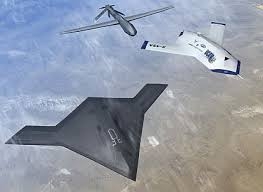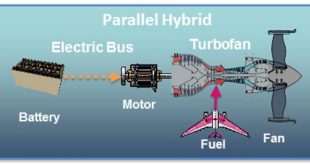There are three major launch types for spacecraft: vertical takeoff, horizontal takeoff, and air launch. The cost of launching into space is often measured by the change in velocity required to reach the destination orbit, known as delta-v or Δv. The amount of Δv required for a mission depends on …
Read More »Airforce develop Artificial Intelligence and Autonomous Systems to meet challenges of Cyber-Attacks, Anti-Access/Area-Denial (A2SD) actions and Space Threats
The current Armed drones like Predators and Reapers are essentially remote controlled that is they involve human operators remotely controlling the vehicle with the assistance of fairly low levels of automation for some functions (e.g., the operator specifies waypoints to be followed by the platform). Systems like these have proved …
Read More »Hybrid-Electric Propulsion for Military aircraft to power radars to laser weapons payloads
The civil global aviation market has experienced considerable economic growth in recent years and will keep increasing. It is estimated that around 1300 new international airports will be required, and the commercial aircraft fleet will double by 2050, with a projected passenger throughput of 7.2 billion in 2035. This growth …
Read More »Armed Crop Dusters for Security and Military Missions
A crop duster, is usually, an aircraft used for dusting or spraying large acreages with pesticides. Aerial spraying and dusting permit prompt coverage of large areas at the moment when the application of pesticide is most effective and avoid the need for wheeled vehicles that might damage crops. Agricultural …
Read More »Military Aerospace (Aircraft ) materials trends and market growth
According to the International Air Transport Association (IATA), the demand for air travel rose by 7.4% in 2018 from 2017 levels. Air passengers accounted for 81.9% of the load factor on aircrafts, while freight load was 49.3%, the IATA data reveals. However, the COVID-19 pandemic has created turmoil in the …
Read More »DARPA GREMLIN developed Flying Aircraft Carrier with launch and retrieval system of swarming UAVs to defeat A2/AD environments
US military is facing increasingly Anti-access /Area denial environment, a set of overlapping military capabilities and operations designed to slow the deployment of U.S. forces to a region, reduce the tempo of those forces once there, and deny the freedom of action necessary to achieve military objectives . “A2/AD capabilities …
Read More »US Army’s Aerial Intelligence, Surveillance and Reconnaissance (A-ISR) system
The “nervous system” of the military, the collection of subsystems used to maximize situational awareness, is referred to as C4ISR—command, control, communications, computers, intelligence, surveillance, and reconnaissance. The primary objective of a C4ISR system is to present the overall scenario and picture of the area of interest (such as a …
Read More »Aircraft propulsion system Market driven by demand for air travel and cargo, aircraft deliveries, and fuel efficiency
All Aircrafts depend on propulsion system is to produce thrust so as to lift the object for a prolonged period of time by consuming different fuels. Presently jet engines are the workhorses of airplanes carrying millions of people, trillions of miles every year, at supersonic speed and with high safety; …
Read More »Aerospace composite materials for high speed Aircraft and Missile applications
Since the birth of aviation, designers have continuously endeavored to improve the lift-to-weight ratios of aircraft. With increasing fuel costs, commercial aerospace manufacturers are under pressure to enhance the performance of aircraft, for which weight reduction is a key factor. Military forces around the world prefer lightweight aircraft, which …
Read More »DARPA Airborne Energy Well seeks laser propulsion on Aircrafts to power Rechargable Unmanned Aerial Systems
A laser is a device that emits a beam of coherent light through an optical amplification process. Laser propulsion is any method of propelling a spacecraft that uses the energy of laser beams. There are two main types of laser propulsion, depending on whether the laser is onboard or …
Read More » International Defense Security & Technology Your trusted Source for News, Research and Analysis
International Defense Security & Technology Your trusted Source for News, Research and Analysis




